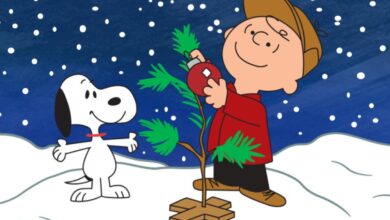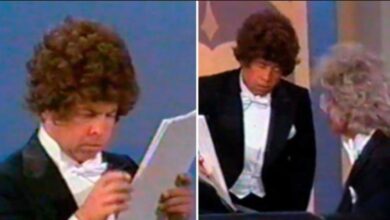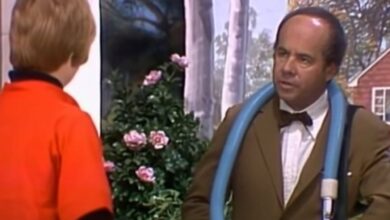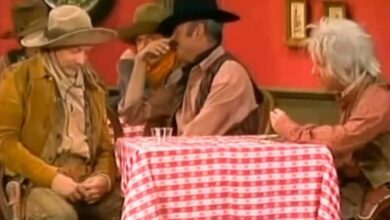The Kinks’ “Lola” Redefines Pop Narratives with Gender-Bending Charm in 1970
When The Kinks released “Lola” in 1970, the song immediately stood out as a bold, playful take on identity and perception—a love story that dared to blur gender lines. Written by Ray Davies, the track became a surprise hit on both sides of the Atlantic, breaking into the Top 10 in the UK and peaking at No. 9 on the US Billboard chart. Its catchy chorus, “Lola, la‑la‑la‑Lola,” was buoyed by a jaunty piano riff and conversational verses that invited listeners into a cheeky tale of unexpected attraction. At a time when pop songs rarely strayed from traditional romantic tropes, “Lola” was typically groundbreaking—and irresistible.
Ray Davies, born in 1944 in London’s Muswell Hill, had formed The Kinks with his brother Dave in the early ’60s. Known for their gritty guitar sound and sharp social commentary, the band had enjoyed hits like “You Really Got Me” and “Waterloo Sunset.” Yet, Ray always favored narrative detail and wry observation over bombast. His unique storytelling sensibility—mixing irony, affection, and working-class wit—set The Kinks apart from their rock peers. “Lola” would become the quintessential Davies anthem, a perfect fusion of character sketch and earworm melody.
The inspiration for “Lola” reportedly came during a holiday in France, where Ray encountered a performer whose androgynous allure intrigued him. In interviews, he once recounted, “I thought, what if a young man got to know this person and didn’t realize until later?” The song treats the moment of revelation with humor rather than judgment—its charm lies in the narrator’s honest confusion and genuine attraction. This narrative nuance made it more than a novelty, embedding it in the era’s shifting social attitudes.
Recorded at Morgan Studios in London, “Lola” was produced by Ray Davies alongside engineer Alan MacKenzie. A warm production balanced Dave Davies’s clean Telecaster twang with Ray’s upbeat piano and Mick Avory’s tight drum pattern. Ray’s voice registers a casual sincerity that feels like confiding in a friend—not lecturing. The arrangement includes a saxophone solo by John Beecham, adding a playful, almost cabaret texture. It’s polished yet intimate, highlighting the song’s conversational charm.
Upon release, the single climbed quickly. In the UK, it lingered in the Top 10 for weeks; in the US, it marked The Kinks’ return to American charts after an earlier ban on touring. Though radio stations initially debated whether it was “appropriate,” word-of-mouth and DJ support pushed it forward. It reached Platinum status in the UK and earned The Kinks a new generation of fans. Though it didn’t collect major awards, its success revitalized the band’s career internationally.
Critically, “Lola” disrupted pop’s comfort zone. It opened doors for songs that tackled sexuality with nuance and humor—an early example of mainstream music’s move toward more complex character studies. Though not confrontational, it broadened the scope of what pop lyrics could address, helping pave the way for later gender-questioning hits. In blending rock, pop, and vaudeville elements, it demonstrated that serious themes could be handled with levity and style.
Professionally, “Lola” reinvigorated The Kinks. It ushered in a more adventurous phase of Ray Davies’s songwriting, leading into albums like Muswell Hillbillies and Everybody’s in Show-Biz which further combined personal narrative with social critique. The song ensured renewed touring opportunities—particularly in the US, where they headlined major venues—and cemented their reputation for witty, literate storytelling. It was the spark for a cultural resurgence.
The song’s influence reached far beyond The Kinks. Its success emboldened artists like Lou Reed and David Bowie to explore fluid identities and unconventional protagonists in pop music. Bowie’s Ziggy Stardust persona, in particular, shares Lola’s playful subversion of gender norms. And punk bands later celebrated Davies’s irreverent wordplay and unorthodox subjects as foundational to their own stylistic freedom.
Over the decades, “Lola” inspired numerous covers. A notable version came from Joan Jett, whose gritty take on the chorus highlights the narrator’s sexual confidence. More recent indie acts have performed stripped-back acoustic renditions, treating it as a timeless character study. Even in karaoke bars, the song’s narrative quality transforms it from simple sing-along to theatrical vignette.
The period around “Lola” saw Ray Davies marrying in 1969 and navigating the pressures of fame. Its playful openness to ambiguity seemed to coincide with his personal reflections on identity and relationship dynamics. Though not tied to explicit personal revelation, the song reflected Davies’s growing interest in exploring nuance and symbolism over straightforward storytelling.
Today, “Lola” remains a staple on classic-rock stations and Rolling Stone’s “500 Greatest Songs.” Its narrative cleverness and melodic appeal remain fresh, while its subject matter continues to resonate in contemporary discussions about identity and acceptance. It stands as a testament to the power of character-driven songwriting—and The Kinks’ enduring relevance.
Musically, “Lola” arguably helped cement the blueprint for pop-rock to tackle real-life oddities with grace. Its conversational lyric style helped shape future acoustic storytelling in rock and influenced the looser, self-aware production styles of the ’70s singer-songwriters. By choosing story over spectacle, it prompted artists to trust audiences with nuance.
Ray Davies would later receive OBE and Ivor Novello honors, partly thanks to “Lola.” In 2015, the song was inducted into the Grammy Hall of Fame, underlining its lasting significance. These formal recognitions highlighted a song that, while playful on the surface, carries lasting artistic weight—and for Davies, reaffirmed his position as one of Britain’s great musical poets.
In the decades since, the charm of “Lola” endures much because it remains, at its core, honest. It didn’t preach, it didn’t shock—yet it invited listeners to smile, think, and perhaps reconsider their assumptions. In one fell swoop, it entertained and enlightened. And isn’t that the hallmark of a truly memorable pop song?
As we look back, “Lola” stands as a cultural milestone: a catchy tune that broadened pop’s lyrical range, revived a band, and opened hearts. Its success proved that rocking out and reading between the lines are not mutually exclusive. In sum, “Lola” endures not because it shocked listeners, but because it charmed them, one la‑la‑la‑Lola at a time—and in doing so, became as timeless as the identity it playfully portrays.





